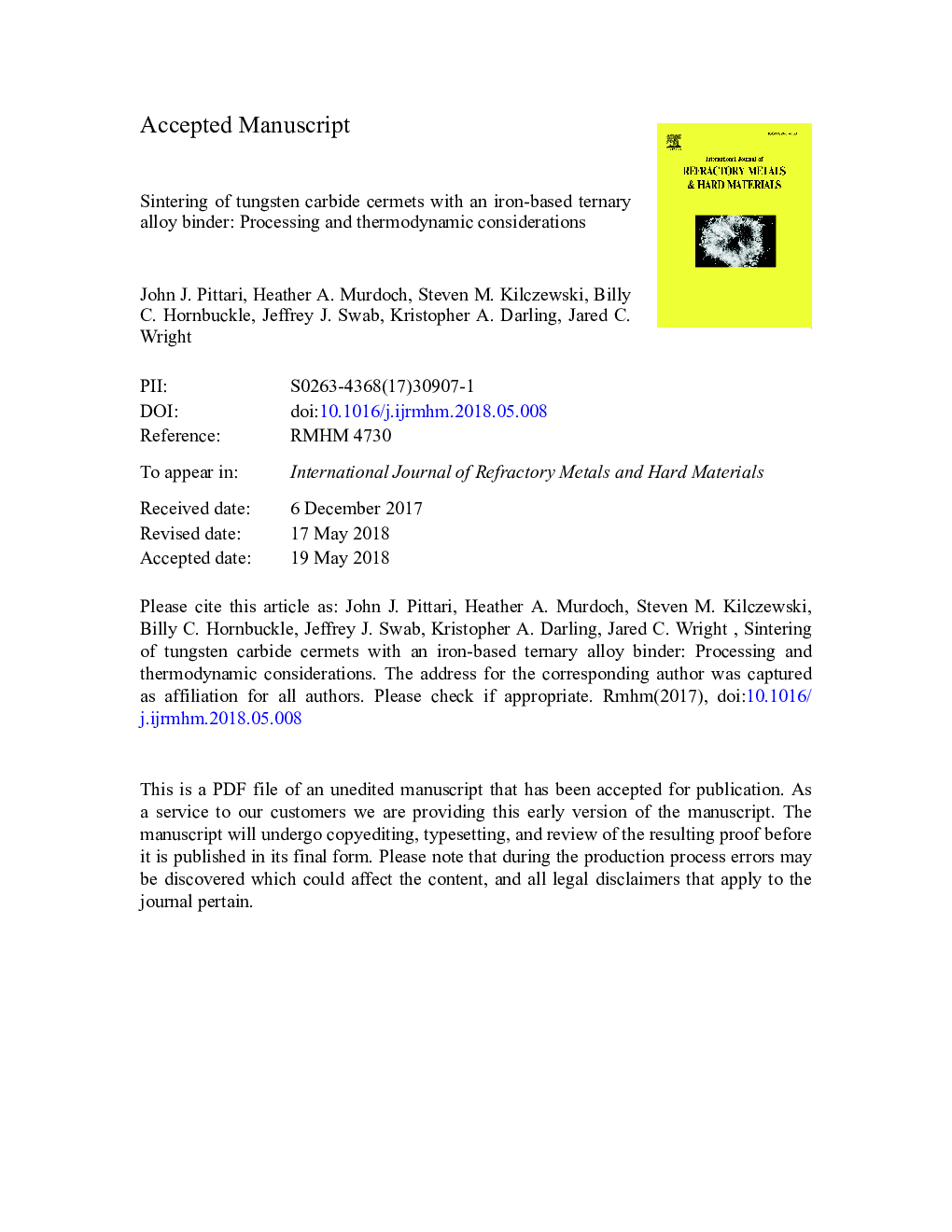| Article ID | Journal | Published Year | Pages | File Type |
|---|---|---|---|---|
| 7989470 | International Journal of Refractory Metals and Hard Materials | 2018 | 38 Pages |
Abstract
Cemented tungsten carbide materials are traditionally bonded using a cobalt matrix, resulting in a material that possesses a unique combination of exceptional properties. However, cobalt has been recently classified as “reasonably anticipated to be a human carcinogen,” and thus, removal of this hazardous phase is desired for many applications. This research focuses on the production of tungsten carbide bodies cemented with a non-hazardous iron-based alloy binder phase. This binder has roots in the previous transition metal binders and additives for tungsten carbide and is based on the principles of high-entropy alloys; however, it relies on a novel means of carbide formation and dispersion from prior investigations. Sintering studies were conducted through uniaxial hot pressing, field-assisted sintering techniques, and pressureless sintering techniques. While some of the results of hot pressing and field-assisted sintering technique were positive, the resultant mesostructure exhibited an undesired, graded, heterogeneous form. Pressureless sintering, on the other hand, was capable of producing a homogeneous microstructure with high theoretical density along with promising hardness and indentation toughness values.
Related Topics
Physical Sciences and Engineering
Materials Science
Metals and Alloys
Authors
John J. III, Heather A. Murdoch, Steven M. Kilczewski, Billy C. Hornbuckle, Jeffrey J. Swab, Kristopher A. Darling, Jared C. Wright,
